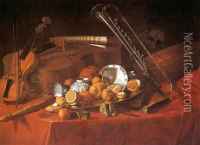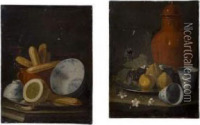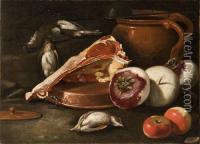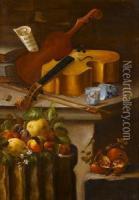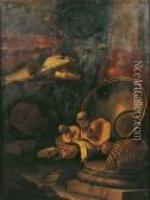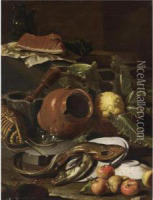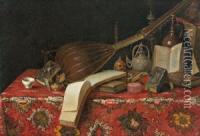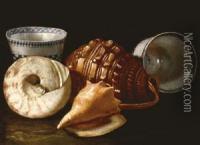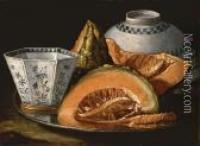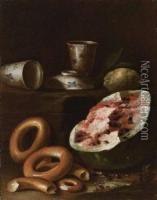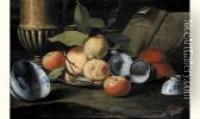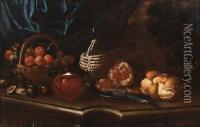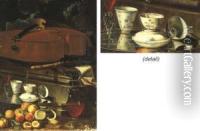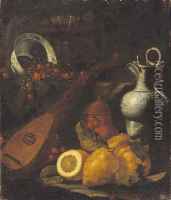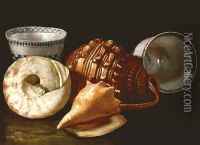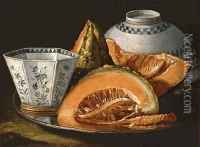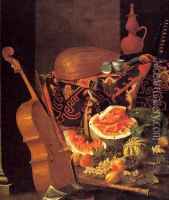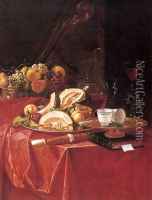Cristoforo Munari Paintings
Cristoforo Munari was an Italian painter, also known as Cristofano Monari. His exact date of birth is not completely certain, but he is believed to have been born in 1667 in Reggio Emilia, Italy. Munari is primarily known for his still life paintings, which exhibit a distinct influence from the Northern European style of still life painting, and he is often associated with the development of this genre in Italy.
Munari's early life and training remain somewhat obscure, but he is thought to have been a student of the painter Luigi Miradori, also known as Genovesino. Munari's works display a meticulous attention to detail and a keen ability to reproduce textures and surfaces, from the gleam of metal objects to the translucency of glass. His compositions often included a variety of objects, such as musical instruments, books, bottles, and glassware, which were rendered with exceptional realism and a strong sense of materiality.
In the late 17th century, Munari moved to Rome, where he was influenced by the works of the Bolognese School and Caravaggio's followers. This period was crucial for his artistic development, as he absorbed elements of Caravaggio's dramatic chiaroscuro and incorporated them into his still life compositions. By the 1700s, Munari had established himself in Florence, where he worked for the Medici family. His paintings from this period reflect the opulent taste of his patrons, and he was well regarded for his ability to capture the luxuriousness of the objects he depicted.
Munari's work was appreciated for its refinement and the quality of its execution. He was able to convey a sense of depth and volume in his paintings, making the objects appear tangible and inviting to the touch. His paintings are also noted for their compositional balance and the serene mood that they evoke, a contrast to the more dramatic still lifes of some of his contemporaries.
Cristoforo Munari died in 1720 in Pisa. Despite being well-known during his lifetime, his fame diminished after his death, and he was largely forgotten until the early 20th century when there was a renewed interest in still life painting and the artists who specialized in it. Today, Munari is recognized for his contribution to the still life genre and his work is held in high esteem by art historians and collectors alike.
